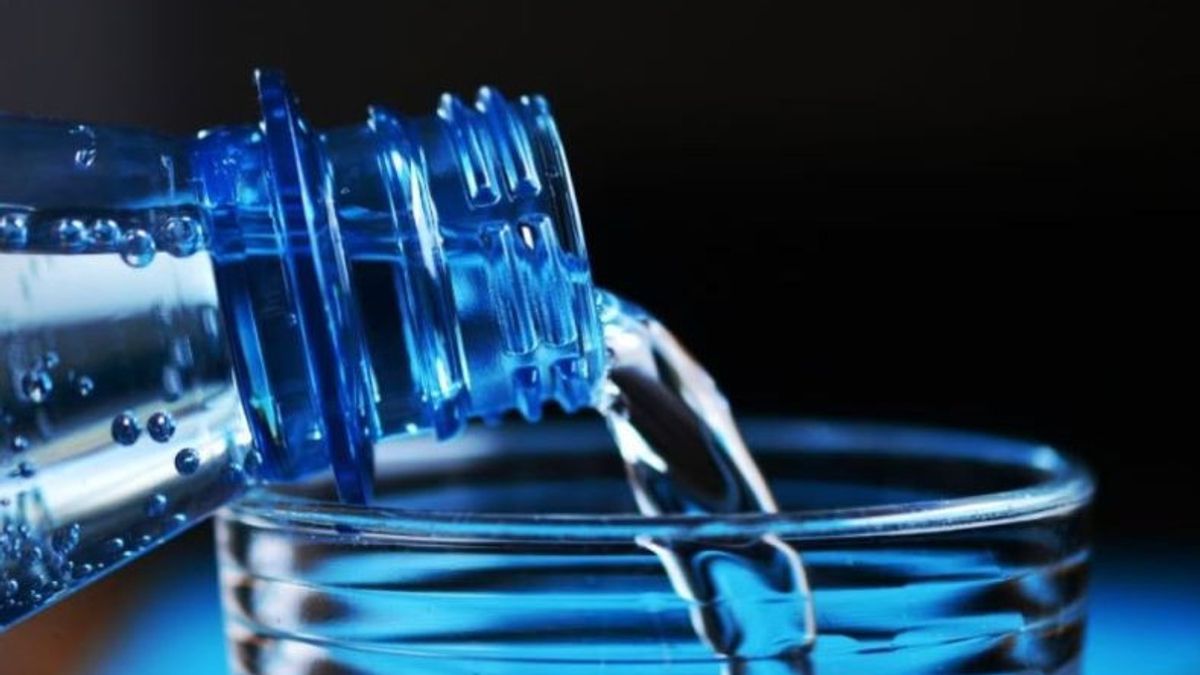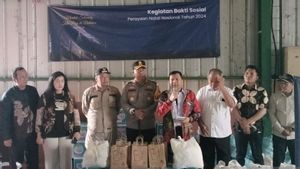JAKARTA - The Food and Drug Supervisory Agency (BPOM) found a number of worrying trends in the migration of the chemical Bisphenol A (BPA) in drinking water packaging made of polycarbonate for public health.
"The 'post-market' sample test conducted in 2021-2022 with samples obtained from all over Indonesia shows an alarming trend," said Deputy for Processed Food Supervision at BPOM Rita Endang in a written statement quoted by Antara, Sunday, January 30.
He said as many as 33 percent of samples at distribution and circulation facilities and 24 percent of samples were within the BPA migration limit range of 0.05 mg/kg set by the European Food Safety Authority (EFSA) and 0.6 mg/kg based on Indonesian regulations. "The potential danger in distribution and circulation facilities is 1.4 times greater than in production facilities," he said.
In addition, there is a potential hazard in distribution facilities of up to 1.95 times based on testing for the BPA content in AMDK products made from polycarbonate from production and distribution facilities throughout Indonesia, Rita added.
BPOM also conducted a BPA exposure study with the results showing that the vulnerable group in infants aged 6-11 months had a 2.4 times risk and children aged 1-3 years had 2.12 times the risk compared to adults aged 30-64 years.
"The health of infants and children is the most basic capital to realize quality and competitive human resources, which is one of the goals of the 2020-2024 RPJMN," he said.
Rita said BPOM also conducted a study of economic losses from health problems that arise due to BPA in bottled water which was carried out with university experts.
The research using descriptive epidemiological study method was conducted by a number of health economists who used prevalence-based estimates to assess the economic burden.
"One disease was chosen with the support of many scientific publications. BPA is an 'endocrine disruptor' (a chemical that can interfere with normal hormone function in humans) based on research on correlations in the male or female reproductive system such as infertility (fertility disorders)," he said.
Based on the results of the Cohort study in South Korea (Journal of Korean Medical Science) in 2021, Rita said, there is a correlation between increased infertility in the high BPA exposure group with the odds ratio or disease exposure ratio reaching 4.25 times.
"It is estimated that the burden of infertility costs on gallon bottled drinking water consumers exposed to BPA ranges from Rp. 16 trillion to Rp. 30.6 trillion in the period of one cycle of in-vitro fertilization (IVF)," he said.
In order to protect public health in the long term, said Rita, several countries have tightened standards for BPA migration limits.
"BPOM learns from current trends, the dynamics of other countries' regulations, and considers the readiness of the food industry and the economic impact," he said.
Before moving on to stricter standards, said Rita, in the early stages, BPOM revised the BPA labeling on bottled water. In addition, BPOM also received support and input from elements of the community and academics regarding safe standards for bottled drinking water.
BPOM continues to evaluate standards and regulations together with experts in the field of water safety, business actors, relevant ministries and institutions, academics and the public in preparing bottled standards and labels for bottled drinking water in the market.
The English, Chinese, Japanese, Arabic, and French versions are automatically generated by the AI. So there may still be inaccuracies in translating, please always see Indonesian as our main language. (system supported by DigitalSiber.id)












